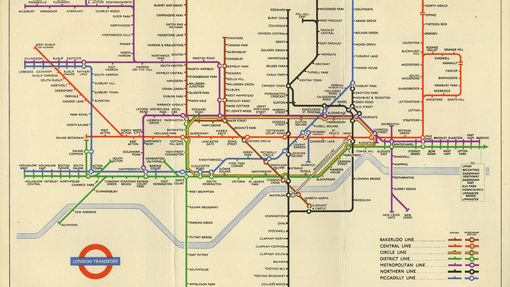
The Waterloo & City line
Key facts
Length: 2.3km
Stations: 2
Opened: 1898
Introduction
London’s second tube railway is also its smallest, with only two stations and a name that tells you most of what you need to know. Though it had appeared on Underground maps since the 1930s, the Waterloo & City was administered as part of the national rail network until it was transferred to the London Underground in 1994.
Why is it called the Waterloo & City line?
The line is named after its two stations. City station was renamed Bank in 1940, but the railway’s name was not updated.
History
The Waterloo & City Railway is unique among the early tubes in that it had no difficulty in raising funds. This was partly because it was shorter and therefore cheaper, but mostly as it had the backing of a large mainline railway, the London & South Western Railway (LSWR). Their Waterloo terminus was not linked to the Inner Circle like London’s other big railways, and they needed a link to the City. A tube railway provided the ideal solution. It was built using Greathead’s tunnelling shields in four years and opened in 1898.
Did you know?
In the subway leading to the Docklands Light Railway at Bank, there is a plaque marking the point where one of the Greathead shields that built it remains buried.
It was run by the LSWR, becoming part of the Southern Railway in 1923, and later of British Railways after nationalisation in 1948. In 1994, it became part of London Underground, and is administered by the Central line, though there is no physical link with the rest of the system.
It is the Underground’s shortest line by far, having only 2 stations and being less than 3km long. There have been numerous proposals to extend the line or join it to other lines over the decades, but impracticalities such as the cost and its awkward positioning have been consistent barriers.
Did you know?
The platforms are still numbered 25 and 26, as if they were part of the Waterloo national rail station
The original wooden trains survived until 1940, when they were replaced by specially designed tube-sized cars similar to the Southern Railway’s surface stock. These trains ran until 1993, when modern Underground cars took their place. These were effectively Central line 1992 stock, but in Network SouthEast livery. In 2006 the line underwent further upgrade works including new track, improved signalling and refurbished trains, which were repainted in London Underground colours.

Did you know?
The Waterloo & City line is the only Underground line to have a day off! Trains do not run on the line on Sundays.















